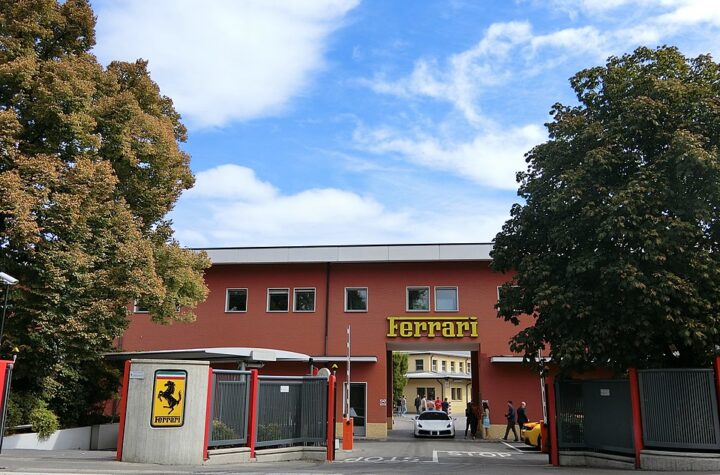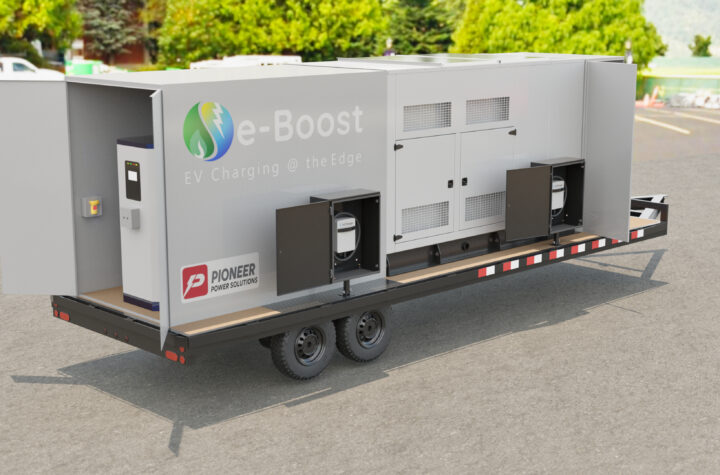
Polymers are in the spotlight as the motor industry focuses on sustainability through a combination of recycling components and reducing vehicles’ carbon footprint.
Automotive Industries (AI) asked Sergio Moriano, Global Business Director Composites at DOMO Engineering Plastics, and Andrea Franzolin, Sales & Marketing Director at DOMO Film Solutions, how their companies are making synthetic polymers more sustainable.
Moriano: Sustainability can be achieved in several ways. DOMO has led the way for a long time in efficient polyamide production at our Caproleuna factory. On the application side, our nylon 6 solutions can replace metal: this reduces an OEM’s CO2 footprint by saving weight while delivering the same key performance properties. A good example would be our ECONAMID® AIR range of polyamide products based on nylon 6 post-industrial feedstocks sourced from the textile industry and carbon fiber from the aerospace sector. This material can slash CO2-equivalent emissions per kg from 12.6 kg, a typical figure for aluminum components, to just 1.8.
AI: What are the challenges in the transition from a linear to a circular economy?
Moriano: One of the main challenges has been collaboration. It’s not always easy to find the right partners at every level in the supply chain. But, fortunately, our industry is becoming increasingly aware that working together will be the only way to succeed. Another major challenge is dismantling end-of-life parts as separating and collecting these applications is still a tricky and very expensive business.
AI: What are the main trends driving polyamide demand?
Moriano: Looking at the automotive market, we can see two key disruptive trends in powertrain technology: the advent of electric cars and new propulsion systems such as hybrid and hydrogen-powered vehicles. This is really changing how we need to develop new products and how our customers, the OEMs, have to develop their cars. What about the batteries and all the electricity flowing through the vehicle, for example? A new generation of plastics with properties like fire retardancy is now required. This is a challenge, because these fire-retardant materials still need to be rigid and straightforward to manufacture. We are developing a wide range of products for e-mobility applications. Another technical trend is the use of thermally and electrically conductive compounds and UD tapes in producing functional and structural parts for cars. And there is an ongoing shift in the automotive sector to downsize combustion engines, prompting a need for materials with higher temperature resistance, because everything is closer to the energy source. DOMO has responded by developing a series of compounds based on PPS THERMEC™ S, which can withstand high temperatures and constant air buffeting.
AI: What benefits do DOMO’s polyamide solutions offer?
Moriano: DOMO’s value proposition centers on three core components. First, our robust integrated nylon 6 capabilities. The highly efficient DOMO Caproleuna factory makes bespoke specialty polymers at the molecular level to optimize the properties of the final plastic compound. Second, our engineering plastics business unit has the agility to respond quickly to industry trends and customers’ changing needs. It understands their technical and budgetary requirements and, of course, how to take the product to market. Third, and most importantly, the key to DOMO’s success is giving our customers the opportunity to be first to market. This is the heart of our added value. And we’re taking it further with our thermal and electrical specialty compounds. We’ve had a great reaction with our ECONAMID® AIR portfolio. It was our first carbon-fiber-based electrically conductive material, and we have high hopes for our new DOMAMID® ZT and ZTE range of electrically and thermally conductive materials.
AI: What electrical- and thermal-grade solutions do you offer for the automotive industry?
Moriano: We’ve developed materials based on nylon 6, nylon 66 and PPS resin to withstand the full range of temperatures that car parts can experience, from room temperature up to 200 °C. We’ve also covered the three main bases when it comes to conductivity – thermally and electrically conductive materials, thermally and electrically insulating materials, and electrical materials without thermal conductivity.
AI: What is special about DOMO’s Nyleen™ low-CO2-emission solution?
Franzolin: DOMO has a business unit dedicated to nylon film production, mainly for flexible packaging applications in the food, pharma and medical sectors, but also for technical applications in automotive and aerospace. Our key offering is Nyleen™, a nylon film with a low carbon footprint, created through a specially redesigned production process to minimize our carbon emissions. The biggest single influence on our carbon footprint is nylon resin. As part of DOMO Chemicals Group, we benefit from a unique integrated supply chain that helps us reduce this impact by taking control of each step in the production process. The other two important drivers behind our sustainability leadership are our responsiveness to customers, thanks to our multi-plant industrial structure, and a healthy energy mix based on renewable sources. Main factors ensuring lower emissions are: 1) Upstream integration with the whole value chain. As part of DOMO Chemicals Group, we benefit from a unique integrated supply chain (from benzene down to film in the same plant), enabling us to control and to improve each production step as anyone else worldwide. 2) Particularly virtuous energy mix, more and more based on renewable sources. 3) Unique proximity to customers thanks to our multi-plant industrial asset, optimizing logistics and transport across Europe. Using our Nyleen™ films, flexible packaging converters can offer their customers solutions with an environmental impact up to 28% lower than for standard nylon film solutions.
AI: How can your new thermoplastic composites bridge the gap between thermoplastic compounds and metals (mechanically and in terms of fatigue & scalability)?
Moriano: We’re working on new technologies like UD tapes – continuous thermoplastic fiber strips based on polypropylene or polyamide. Basically, these continuous fibers fill the gap between metal and thermoset. On the subject of megatrends in electric vehicles, we can make continuous large parts like battery trays, for example. These applications are typically made from metal, but the resulting parts are very heavy, weighing above 50kg. It’s very hard to get the same results from thermoplastic, which is why UD tapes are going to be a key technology for the future. The OEMs and Tiers can use any layer configuration, applying isotropic forces and maintaining at the same time a high fatigue resistance. As for scalability, thermoplastics are a great choice. There are lots of technologies on the market now for thermoforming, for stamping, for over-molding materials that enable large parts to be made in under a minute. This is really where car manufacturers need to be in the production process.
AI: What next for DOMO Chemicals?
Moriano: DOMO has signed an agreement to acquire Solvay’s performance polyamides business in Europe. It’s still with the European Commission, but we’re excited about our strategy, which should yield tremendous growth over the next 10 years. Solvay gives us a great team of people with a wealth of application development experience. They’ve been doing it for more than 40 years, in harness with the OEMs. We’re looking forward to bringing all these people together to ensure that DOMO continues to be a market leader.














More Stories
Meet Rita Case – recipient of 2024 NAMAD Lifetime Achievement Award
Getac on AI’s transformative impact on automotive production and aftersales
Contechs appoints Christopher Hilts as US Head of Business Development